毕业设计--基于 Matlab 实现的 CT 重建算法仿真比较研究
学 士 学 位 论 文
THESIS OF BACHELOR
(2009—2013 年)
题 目 基于 Matlab 实现的 CT 重建算法仿真比较研究
学 院: 信息工程 系 电子信息工程
专业班级:
学生姓名: 学号:
指导教师: 职称:
起讫日期: 2013.3.18 —— 2013.6.7
摘要
基于 Matlab 实现的 CT 重建算法仿真比较研究
专 业: 学 号:
学生姓名: 指导教师:
摘要
计算机断层成像(即 CT(Computerized Tomography))技术是一项近年来快速发
展多学科交叉的先进技术,除了医学应用,还应用在工业无损检测、射电天文学、
精密仪器反演等多个重要领域。CT 图像重建是 CT 技术的核心,重建算法的优劣直
接关系到对检测结果判断的准确性。医学 CT 普遍采用解析成像技术,这主要因为
医用 CT 可以采集到完整的投影数据。然而在工业应用中,一般得不到完整的投影
数据,因此要利用不完整的投影数据得到较清晰的图像,必须采用迭代重建法。
针对以上情况,本课题作了以下两方面的分析比较。
�
1.能获取完整投影数据时,用计算机模拟了解析法的图像重建。发现图像重建
的速度快,且重建的图像与原图的视觉相似度接近 1。
2.不能获取完整投影数据时,用计算机模拟了迭代算法的图像重建。先用 ART
迭代算法引入松弛参数,分析了松弛参数重建图像的影响。接着用 SIRT 算法重建
图像,这种算法所得的图像比 ART 算法较好。最后在 ART 算法基础上采用全差分对
重建图像进行优化,图像质量有了明显提高。
关键字:图像重建算法;解析重建;迭代重建
I
Abstract
Based on Matlab realize the CT reconstruction algorithm
simulation comparative study
Abstract
Computed tomography (CT (Computerized Tomography)) technology is a
rapid development in recent years, multidisciplinary advanced technology,
in addition to medical applications, but also used in industrial
nondestructive testing, radio astronomy, precision instruments and other
important areas of the inversion. CT image reconstruction CT technology
is the core of the reconstruction algorithm is directly related to the
accuracy of the test results determine. Medical CT imaging commonly used
analytical technique, which can be collected mainly due to a complete
medical CT projection data. However, in industrial applications, the
general lack of complete projection data, and therefore the use of
incomplete projection data to be more clear image, an iterative
reconstruction method must be used.
�
For the above, this project made the following two aspects of the
analysis and comparison.
1. can get the full projection data, using a computer simulation of
the analytical method of image reconstruction. Found fast image
reconstruction and the reconstructed image with the original visual
similarity is close to 1.
2.can not get the full projection data, using a computer simulation
of the iterative algorithm for image reconstruction. First with the
introduction of ART relaxation parameter iterative algorithm analyzes
the impact of relaxation parameters of the reconstructed image. Followed
by SIRT algorithm for reconstruction of images, the resulting image of
this algorithm is better than the ART algorithm. Finally ART algorithm
based on a fully differential optimized for image reconstruction, image
quality has improved significantly.
Keywords:Image reconstruction algorithm;analytic reconstruction;
iterative reconstruction
II
目录
目录
摘
要 ......................................................................
..........................................................I
Abstract ............................................................
................................................................II
�
第一章 绪
论.......................................................................
.............................................. 1
1.1 引
言 ......................................................................
............................................. 1
1.2 CT 的分
类 ......................................................................
.................................... 2
1.3 CT 的组成结
构 ......................................................................
............................. 4
1.4 论文的组织结
构 ......................................................................
........................... 4 第二章 CT 图像重建的基本原
理 ......................................................................
................. 6
2.1 所需数据的扫描获
取 ......................................................................
.................... 6
2.2 图像重建算
法 ......................................................................
............................... 6 第三章 CT 图像解析重建算
�
法 ......................................................................
.................... 9
3.1 反投影重建法
(BP).....................................................................
..................... 9
3.2 滤波反投影图像重建法
(FBP)....................................................................
.....11
3.3 Radon 变换与傅立叶变
换 ......................................................................
............ 12
3.3.1 Radon 变
换 ......................................................................
...................... 12
3.3.2 傅立叶变换的定
义 ......................................................................
........... 13
3.4 中心切片定
理 ......................................................................
............................. 14
3.5 平行投影重建算
法 ......................................................................
...................... 17
�
3.5.1 算法原
理 ......................................................................
......................... 17
3.5.2 滤波(卷积)反投
影 ......................................................................
........ 18
3.5.3 Radon 反变换重建算
法 ......................................................................
..... 18
3.6 解析重建算法的实现和对比分
析 ......................................................................
. 19 第四章 迭代重建算
法.......................................................................
.............................. 22
4.1 迭代重建算法的思想原
理 ......................................................................
........... 22
4.1.1 迭代重建的数学模
型 ......................................................................
........ 22
4.2 代数重建法
(ART)....................................................................
..................... 25
�
4.3 联立迭代重建法
(SIRT) ..................................................................
............... 26
4.4 全差分迭代算法
(TV).....................................................................
............... 27
4.5 迭代重建算法的实现和对比分
析 ......................................................................
. 27 第五章 结
论.......................................................................
............................................ 37 参考文
献 ......................................................................
.................................................. 38
III
目录
附
录 ......................................................................
......................................................... 40 谢
辞 ......................................................................
......................................................... 60
IV
第一章绪论
第一章 绪论
1.1 引言
�
自从 X 射线发现后,医学上就开始用它来探测人体疾病。但是,由于人体内有
些器官对 X 线的吸收差别极小,因此 X 射线对那些前后重叠的组织的病变就难以发
现。于是,美国与英国的科学家开始了寻找一种新的东西来弥补用 X 线技术检查人
体病变的不足。
CT(电子计算机体层成像)是 70 年代初放射诊断的项重突破,CT 不是 X 线摄
影,而是用 X 线对人体扫描(图 1.1 所示),取得信息,经电子计算机处理而获得的
重建图像它能使传统的 X 线检查难以显示的器官及其病变显示成像,而且图像逼
真,解剖关系明确,从而扩大了人体的检查范围,大大提高了病变的早期检出率和
诊断准确率。这种检查简便、安全、无痛苦、无创伤、无危险,它促进了医学影像
诊断学的发展,CT 的研制成功被誉为自伦琴发现 X 射线以后,放射诊断学上最重
要的成就。发明者亨斯菲尔德和科马克共同获得了 1979 年的诺贝尔奖金。CT 最初
只用于头部检查,1974 年又出现了全身的 CT。在短短 10 余年间,CT 已遍及全
球,从第一代发展到第五代。我国各大城市医院所使用的
[5]CT 属第三代。全身 CT 可以作头、胸、腹、骨盆的横断扫描,也可作甲状
腺、脊柱、关节和软组织及五官等小部位的区域扫描。CT 最适于查明占位性病变
如肿瘤、囊肿、增大的淋巴结、血肿、脓肿和肉芽肿的大小、形态、目和侵犯范
围,它可以决定某些器官癌肿的分期和是否能进行手术切除。在某些情况下,CT
还能区别病变的病理特性如实性、囊性、血管性、炎性、钙性、脂肪等。
CT 成像技术的基本原理是根据人体中不同组织对 X 射线的衰减作用不同,用 X
线束对人体某部一定厚度的层面进行扫描,由探测器接收透过该层面的 X 线,转变
为可见光后,由光电转换变为电信号,再经模拟/数字转换器(analog/digital
�
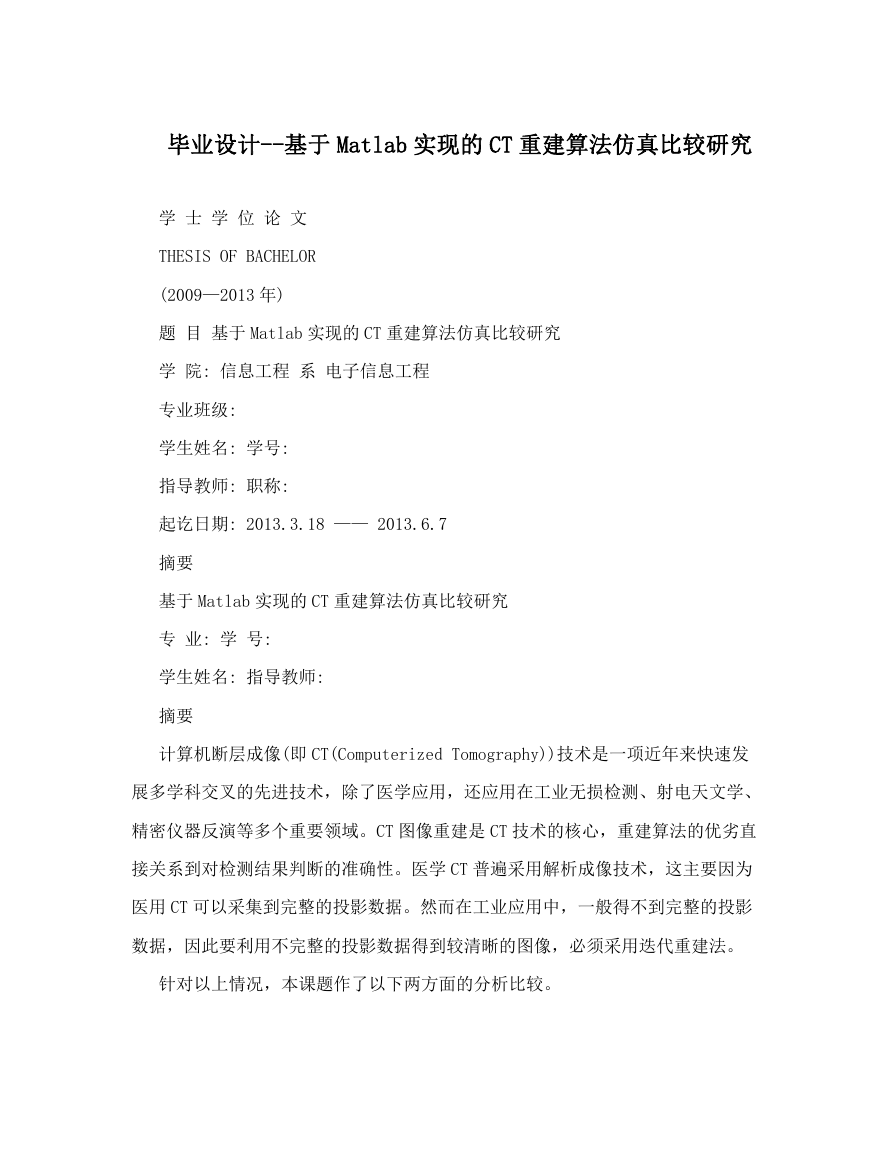

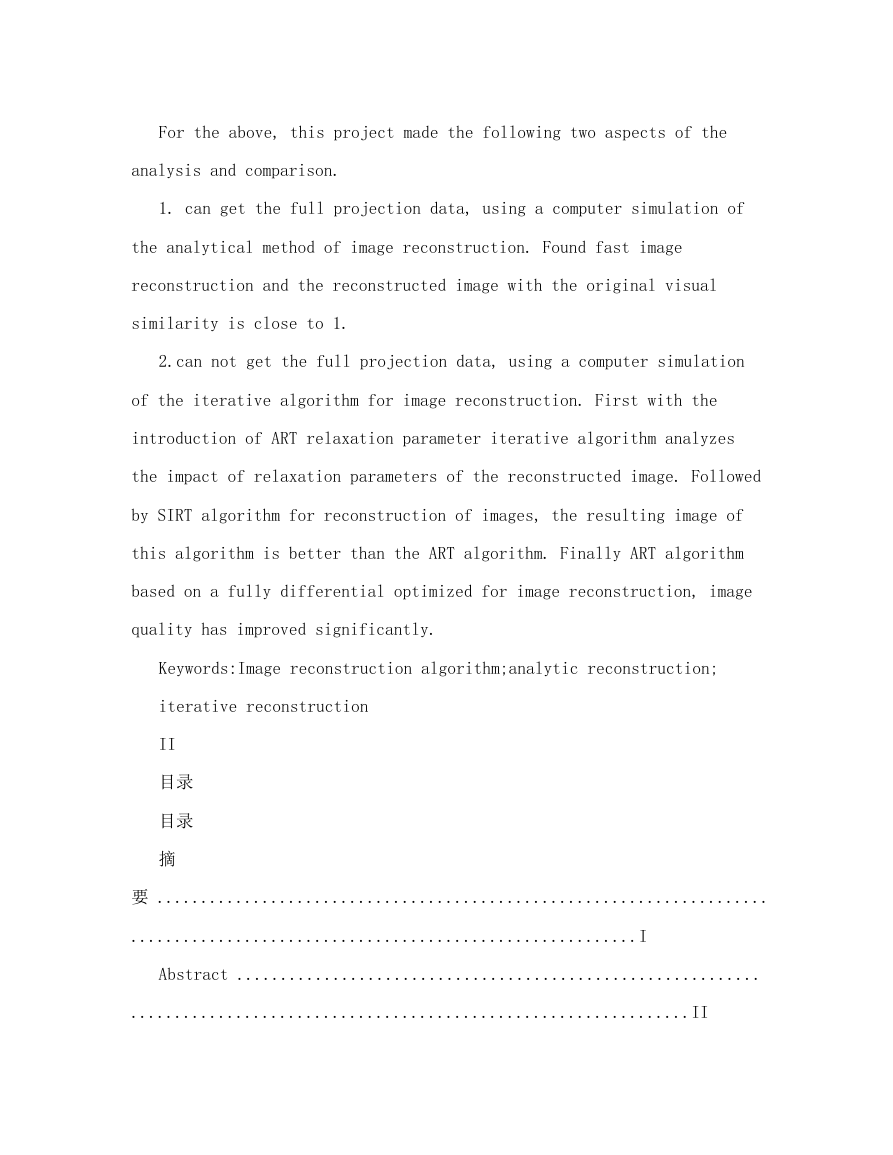
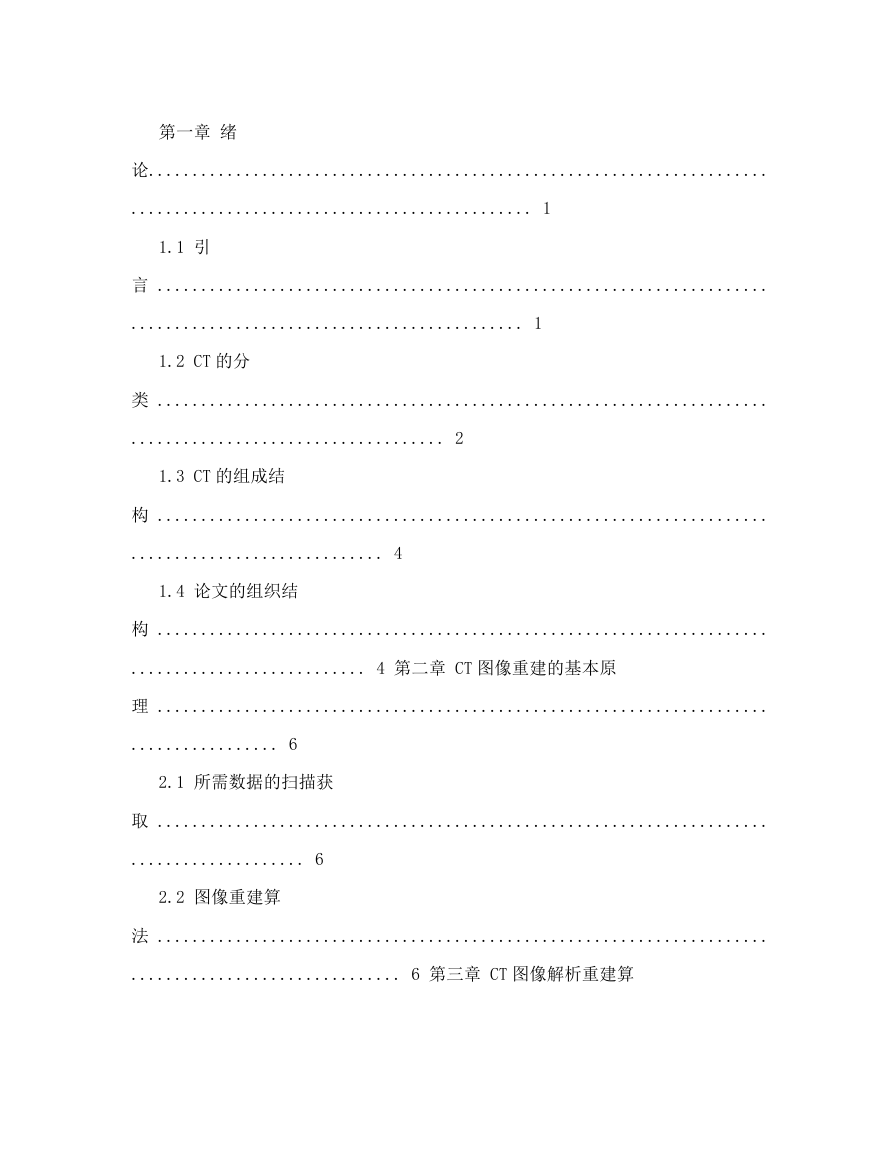
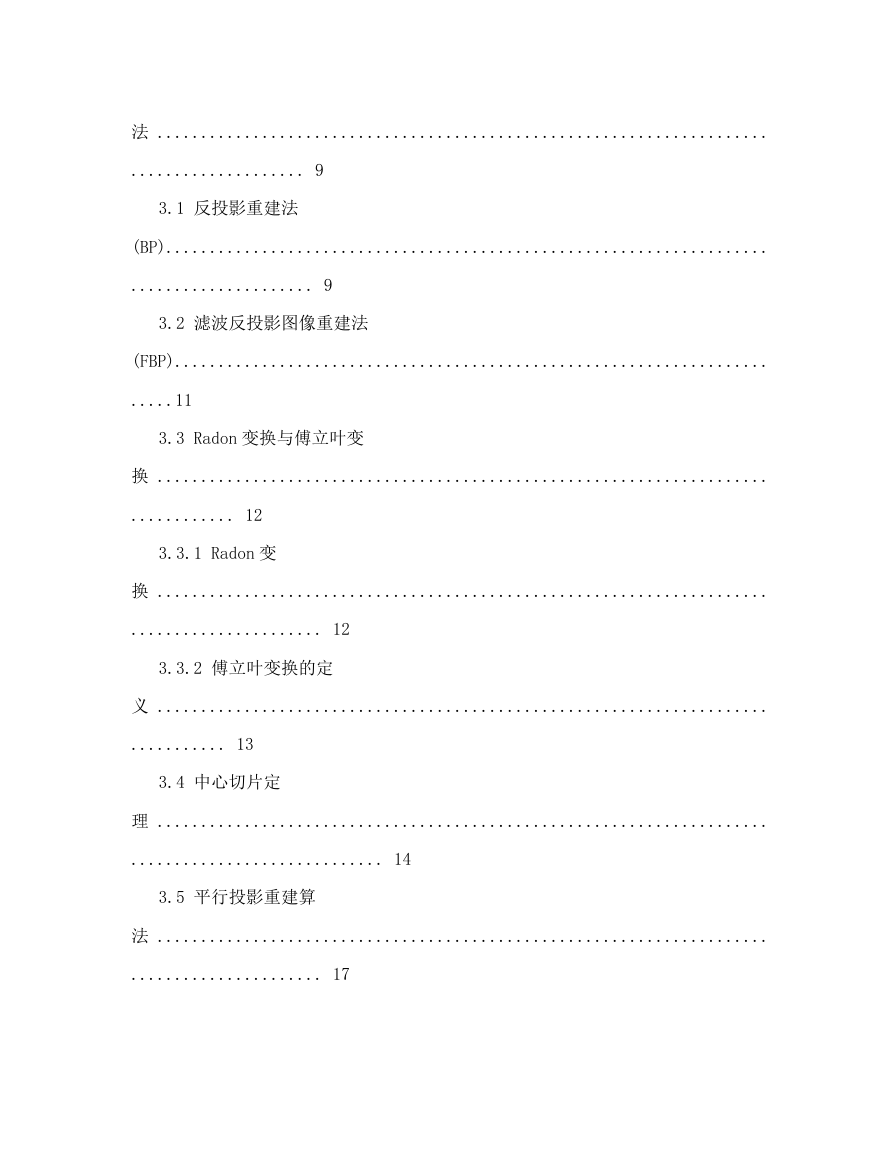
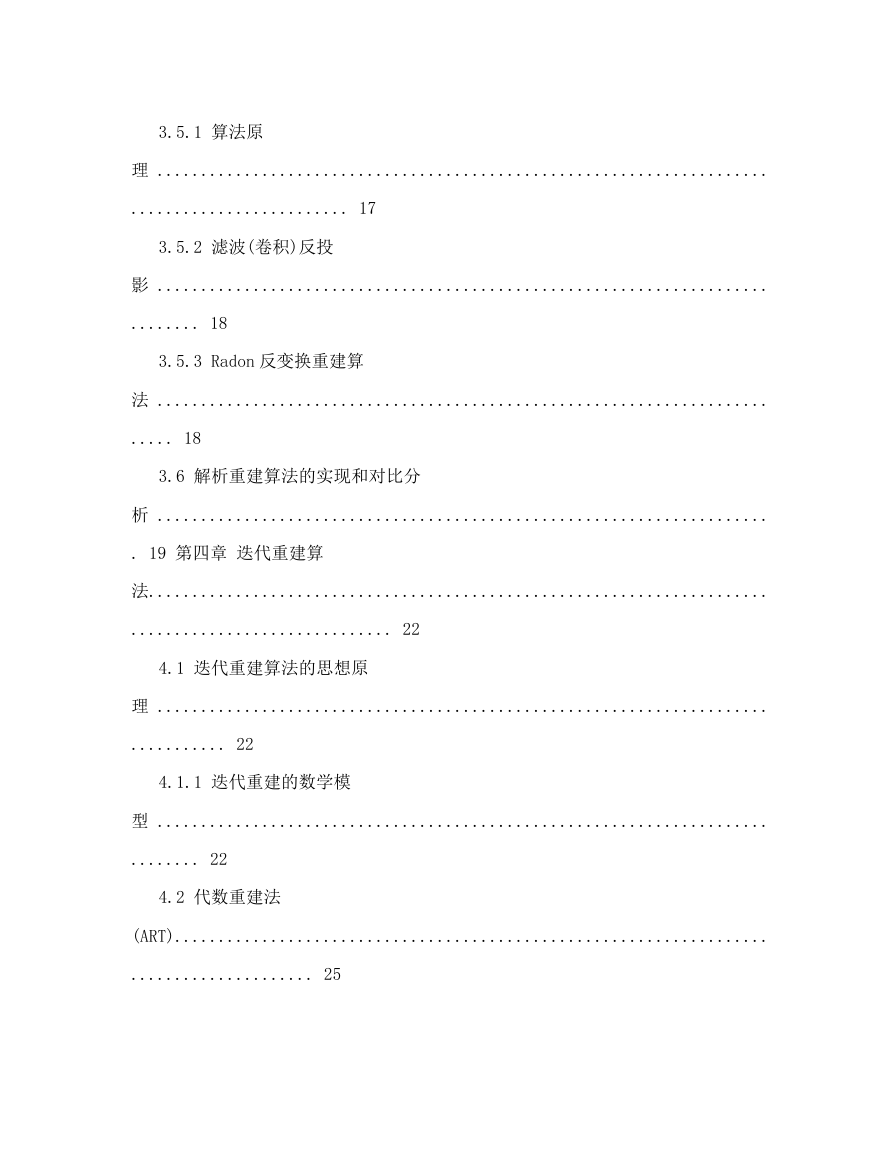
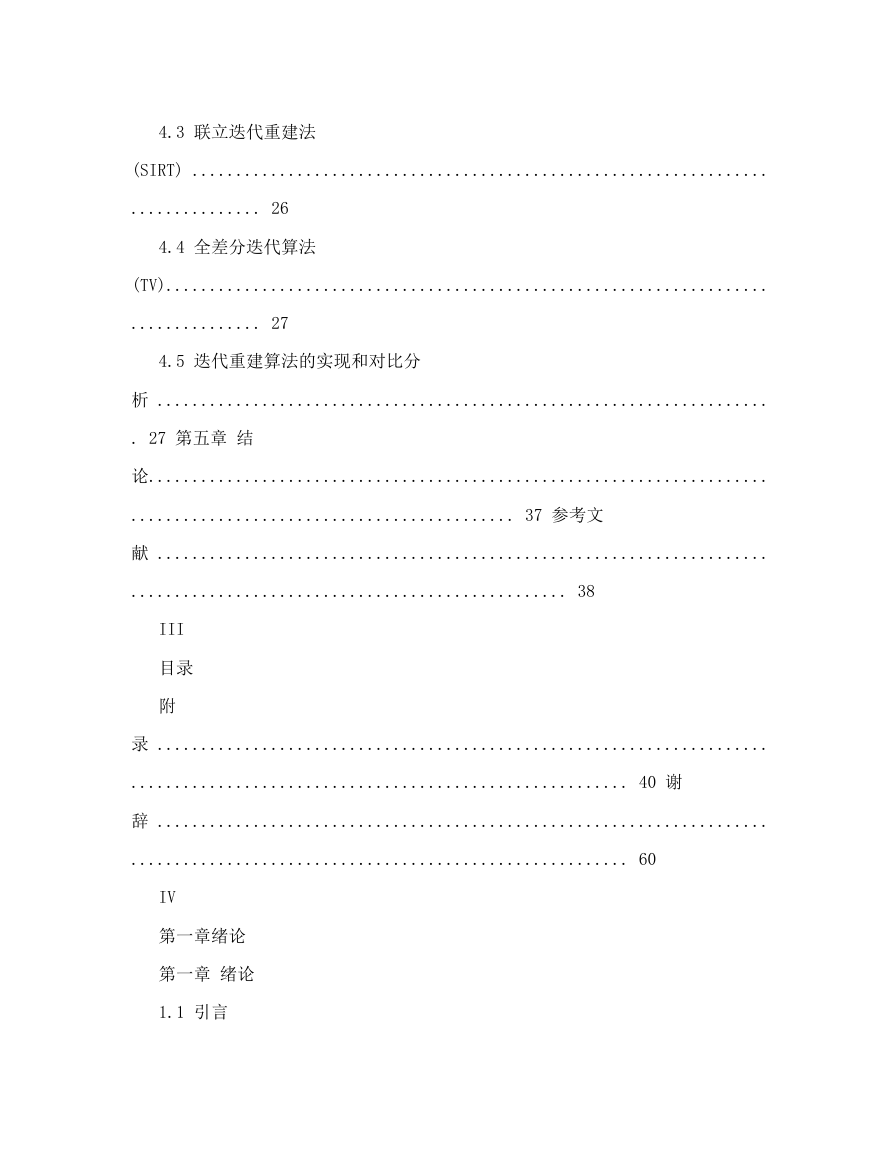









 2023年江西萍乡中考道德与法治真题及答案.doc
2023年江西萍乡中考道德与法治真题及答案.doc 2012年重庆南川中考生物真题及答案.doc
2012年重庆南川中考生物真题及答案.doc 2013年江西师范大学地理学综合及文艺理论基础考研真题.doc
2013年江西师范大学地理学综合及文艺理论基础考研真题.doc 2020年四川甘孜小升初语文真题及答案I卷.doc
2020年四川甘孜小升初语文真题及答案I卷.doc 2020年注册岩土工程师专业基础考试真题及答案.doc
2020年注册岩土工程师专业基础考试真题及答案.doc 2023-2024学年福建省厦门市九年级上学期数学月考试题及答案.doc
2023-2024学年福建省厦门市九年级上学期数学月考试题及答案.doc 2021-2022学年辽宁省沈阳市大东区九年级上学期语文期末试题及答案.doc
2021-2022学年辽宁省沈阳市大东区九年级上学期语文期末试题及答案.doc 2022-2023学年北京东城区初三第一学期物理期末试卷及答案.doc
2022-2023学年北京东城区初三第一学期物理期末试卷及答案.doc 2018上半年江西教师资格初中地理学科知识与教学能力真题及答案.doc
2018上半年江西教师资格初中地理学科知识与教学能力真题及答案.doc 2012年河北国家公务员申论考试真题及答案-省级.doc
2012年河北国家公务员申论考试真题及答案-省级.doc 2020-2021学年江苏省扬州市江都区邵樊片九年级上学期数学第一次质量检测试题及答案.doc
2020-2021学年江苏省扬州市江都区邵樊片九年级上学期数学第一次质量检测试题及答案.doc 2022下半年黑龙江教师资格证中学综合素质真题及答案.doc
2022下半年黑龙江教师资格证中学综合素质真题及答案.doc